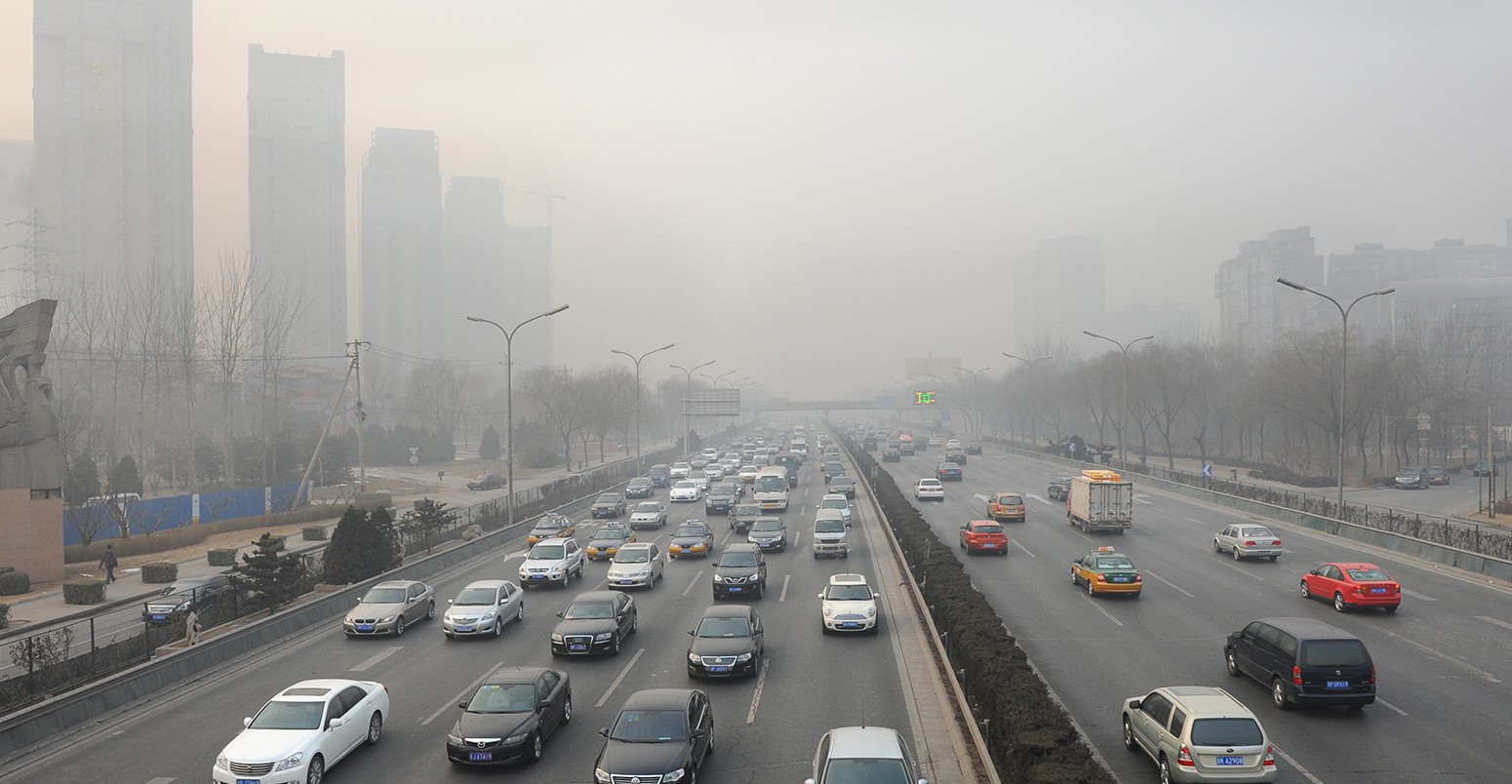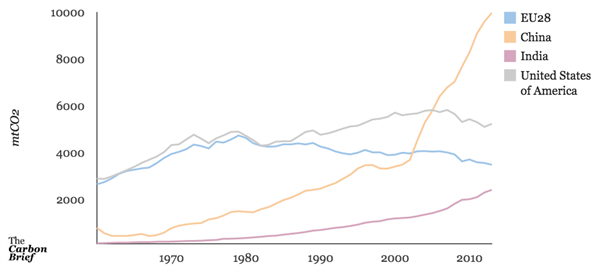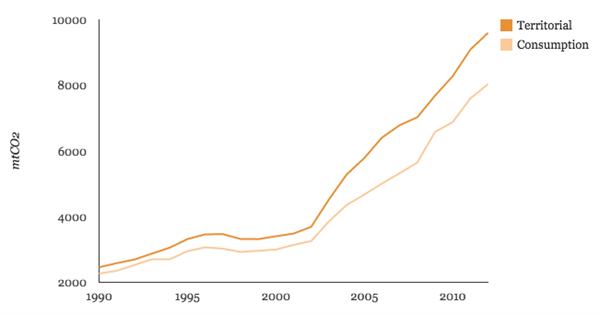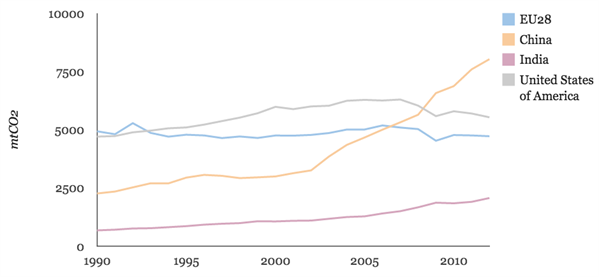
How much of China’s carbon dioxide emissions is the rest of the world responsible for?
Mat Hope
10.09.14Mat Hope
09.10.2014 | 3:00pmChina is the world’s largest greenhouse gas emitter, by far. The country produces more than a quarter of the planet’s annual greenhouse gas emissions.
World leaders increasingly reference China’s spiralling emissions as a reason why it should commit to dealing with climate change.
But is it fair to ask China to lead the way? After all, a hefty share of the pollution rising out of China’s smokestacks comes from factories churning out TVs, mobile phones and cheap toys for the rest of the world.
China’s emissions
In 2006, China became the world’s largest emitter, overtaking the US. By 2013, 28 per cent of global greenhouse gas emissions came from China, according to data from the Global Carbon Project.
This graph shows the dramatic step change in the growth of China’s carbon dioxide emissions that’s taken place in the last 15 years:

As China’s economy has boomed, emissions have grown – fast.
Emissions accounting
But this graph only tells part of the story.
China is the world’s manufacturing hub. One reason for the increase in emissions is that China is making more and more of the stuff the rest of the world wants to buy.

Emissions in places like the EU are falling – partly because it is manufacturing less, and importing more. So who should be responsible for the emissions associated with an ipod made in China and used in the UK?
The simplest way of measuring a country’s emissions is to look at how much pollution is released within its borders, called territorial emissions.
It’s also possible to look at only the emissions associated with products that actually stay in China. These are termed consumption emissions, and this accounting lowers the country’s carbon footprint a bit.
The dark orange line on the graph below shows how much China emits. The light orange line shows the emissions associated with the goods that stay in China.
China emitted about 1.6 billion tonnes of carbon dioxide making products it exported elsewhere in 2012, about 16 per cent of its total. Arguably, those might be emissions the rest of the world is responsible for.

Emissions from trade
So which countries are buying China’s goods, and maybe exporting their pollution in the process?
This graphic breaks down the emissions associated with the goods other countries buy from China, based on data from EORA’s world trade database:
Unsurprisingly, given its large population and appetite for consumer goods, the US imports the biggest share of goods from China. Europe’s big economies also buy a lot from the country. In 2011, the UK imported goods accounting for about 9 million tonnes of China’s emissions. That’s about one per cent of China’s overall emissions.
It’s not just western countries: Japan and South Korea also import a lot of China’s products. Hong Kong’s contribution is artificially inflated, because it’s a big stop-off point for lots of China’s shipments before they get sold elsewhere.
Accounting for exports does make a difference to China’s emissions, but it doesn’t change the overall picture. This graph shows emissions adjusted to take account of imports and exports for the four major emitters.

As you can see, even when emissions from exports are removed, China is still way out ahead, although to a lesser extent.
China’s responsibility
So China’s emissions make up the biggest share of the world’s emissions, regardless of how they’re calculated.
But there’s another very important way of looking at the data.
China has almost 20 per cent of the world’s population, so when the country’s emissions are broken down per person, each Chinese citizen emits much less than their counterparts in the more developed world. Nonetheless, these per-capita emissions are also increasing rapidly as the middle class expands and demands the lifestyles their richer counterparts enjoy.
So it’s really the pace of China’s development combined with the scale of the country that makes it the world’s number one emitter.
Such information is important in the context of the international climate negotiations. It suggests the rest of the world has responsibility for a small but significant portion of China’s emissions. But how the China iteself chooses to act is likely to determine the success or failure of any future plan to limit climate change.
Main image: Smog over the traffic in Beijing, China. Credit: © Hung Chung Chih/Shutterstock.com.
-
How much of China's carbon dioxide emissions is the rest of the world responsible for?


